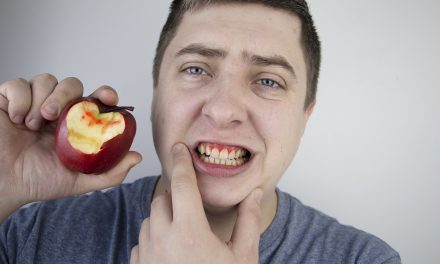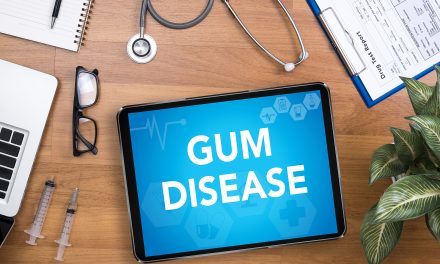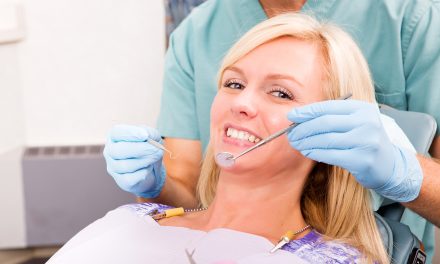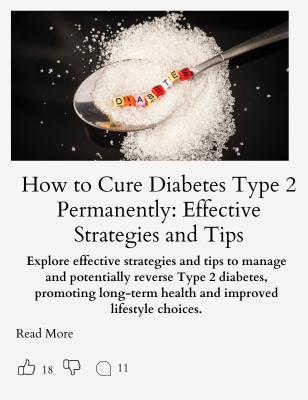Maintaining good dental hygiene is crucial for both oral health and overall well-being. Brush your teeth at least twice a day and floss once daily to prevent plaque buildup and gum disease. Regular visits to the dentist for professional cleanings and check-ups ensure any potential issues are caught early.
Diet also plays a significant role in dental health. Consuming less sugar and eating foods rich in vitamins and minerals can strengthen teeth and gums. Apart from daily habits, staying informed about new dental technologies and debunking common myths can enhance personal dental care routines.
Key Takeaways
- Brush twice a day and floss daily for optimal dental hygiene.
- Regular dental check-ups are essential for early issue detection.
- Healthy diet choices support strong teeth and gums.
Importance of Dental Hygiene
Dental hygiene is crucial for maintaining not only a bright smile but also for preventing serious oral health problems. Good practices help prevent tooth decay and gum disease, and they are linked to overall health benefits.
Preventing Tooth Decay
Tooth decay is a common problem that occurs when the enamel, the hard outer layer of the teeth, gets damaged. Bacteria in the mouth feed on sugars and starches, producing acids that wear down the enamel. Regular brushing and flossing remove these foods and bacteria, reducing the risk of cavities.
Using fluoride toothpaste helps to strengthen the enamel, making it more resistant to acid attacks. Regular dental check-ups are also essential for identifying early signs of decay before they develop into more serious issues. These visits can involve professional cleanings and treatments that are not possible through at-home care alone.
Adopting a diet low in sugary snacks and drinks can further support good dental hygiene. Drinking plenty of water, particularly fluoridated water, can rinse away sugars and bacteria in the mouth, helping reduce decay.
Preventing Gum Disease
Gum disease, also known as periodontal disease, is a serious condition that damages the gums and surrounding tissues. It begins with plaque, a sticky film of bacteria that builds up if teeth are not cleaned properly. Plaque can harden into tartar, which can only be removed by a dentist.
Daily brushing and flossing are key to removing plaque from teeth and gums. A strong oral hygiene routine helps prevent the initial stages of gum disease, gingivitis, where gums become swollen and bleed easily. Left untreated, gingivitis can progress to periodontitis, which can lead to tooth loss and jawbone damage.
Keeping regular dental appointments means early signs can be spotted and managed effectively. Dentists may advise on proper brushing techniques, which help ensure plaque and tartar are minimized effectively.
Overall Health Connection
Oral hygiene is strongly linked to overall health because poor oral health can lead to issues beyond the mouth. Evidence suggests that gum disease can increase the risk of serious health problems, such as heart disease, diabetes, and respiratory infections.
Inflammation caused by gum disease can affect the bloodstream, creating problems elsewhere in the body. Good dental hygiene, therefore, not only maintains oral health but can significantly reduce risks of other health issues. Maintaining a consistent and thorough dental routine plays a key role in long-term wellness.
For parents, it’s vital to instill these habits early in their children, knowing that good hygiene can lead to lifetime health benefits.
Daily Dental Hygiene Practices
Daily dental hygiene is crucial for maintaining oral health. Key practices include brushing, flossing, and using mouthwash to prevent tooth decay and gum disease.
Brushing Techniques
Brushing teeth twice a day is essential for removing plaque and food particles. A toothbrush with soft bristles is recommended to avoid damage to the gums and enamel.
A pea-sized amount of fluoride toothpaste should be used. Fluoride helps strengthen tooth enamel and protect against cavities. Using gentle circular motions, focus on brushing all surfaces of the teeth, including the fronts, backs, and chewing surfaces.
Electric toothbrushes can be more effective in reducing plaque buildup compared to manual toothbrushes. It is also important to replace toothbrushes every three to four months or when the bristles become frayed.
Flossing Methods
Daily flossing is equally important for removing plaque and debris between teeth and below the gumline, where toothbrushes cannot reach. Traditional floss or pre-threaded flossers can be used.
To floss effectively, use an 18-inch piece of dental floss. Wrap the ends around fingers and gently slide it between teeth. Curve the floss into a “C” shape against each tooth and slide it up and down.
Water flossers offer an alternative for those who find it challenging to use traditional floss. Consistent flossing helps prevent gum disease and cavities.
Mouthwash and Rinses
Mouthwash can help reduce oral bacteria and freshen breath. An alcohol-free mouthwash is preferable to avoid irritation, especially for those with sensitive gums.
Antimicrobial or fluoride rinses can offer additional benefits, like reducing bacteria or strengthening teeth. However, mouthwash should not replace regular brushing and flossing.
It is usually recommended to rinse for about 30 seconds after brushing and flossing. Thorough rinsing helps remove any remaining particles and reach areas that brushing and flossing might miss. Using mouthwash consistently can be a key part of daily dental hygiene.
Professional Dental Care Schedule
Regular dental visits are crucial to maintain oral health. They include routine check-ups, professional cleanings, and diagnostic X-rays. Each plays a unique role in preventing dental issues and ensuring a healthy smile.
Routine Check-ups
Routine check-ups are essential for maintaining dental health. During these visits, dental professionals examine the teeth, gums, and mouth. It’s recommended to schedule these check-ups every six months to catch potential problems early.
At a check-up, the dentist will look for signs of cavities, gum disease, and other issues. They will also check for any changes since the last visit. A dentist can provide advice on brushing and flossing techniques, helping individuals improve their oral care at home.
Professional Cleanings
Professional cleanings go beyond daily brushing and flossing. Dental hygienists use specialized tools to remove plaque and tartar buildup. This process prevents gum disease and tooth decay. It is recommended to have these cleanings every six months, usually aligned with routine check-ups.
A cleaning session might include teeth polishing, which helps remove stains and smoothens the surfaces. This not only brightens the smile but also makes it harder for plaque to accumulate. Maintaining regular cleaning appointments significantly reduces the risk of developing serious dental issues.
Diagnostic X-rays
Diagnostic X-rays are vital for detecting dental problems not visible during a routine exam. They help identify issues such as cavities between teeth, bone loss, or impacted teeth. Dentists typically recommend X-rays once a year but may adjust based on individual needs.
The frequency of X-rays can vary from person to person, especially for those with ongoing dental issues. X-rays assist dentists in formulating accurate treatment plans. This ensures that potential problems are addressed before they become more serious, thereby safeguarding the patient’s oral health in the long run.
Diet and Dental Health
A balanced diet is crucial for maintaining good dental health. Certain foods can harm teeth, while others are essential for strengthening and protecting them. Understanding the right dietary choices can help prevent cavities and other dental issues.
Foods to Avoid
Sugary foods and drinks can lead to tooth decay. Bacteria in the mouth consume sugar and produce acid, which wears down tooth enamel. Sticky candies, like caramels or gummies, are especially harmful because they cling to teeth and are not easily washed away by saliva. Acidic foods, such as citrus fruits and vinegar-based products, can also erode enamel if consumed excessively. Regular consumption of these can increase the risk of cavities.
Reducing intake of these foods can help protect teeth from decay. Instead, one should choose alternatives like fresh fruits or dairy products, which are less likely to damage tooth enamel.
Calcium and Vitamin D
Calcium is vital for strong teeth, as it strengthens enamel and helps maintain bone density in the jaw. Dairy products like milk, cheese, and yogurt are excellent sources of calcium. Leafy greens and almonds also contribute to calcium intake. Vitamin D, which aids in calcium absorption, is equally important. Sun exposure and foods such as fatty fish, egg yolks, and fortified cereals provide adequate Vitamin D.
Including these nutrients in daily meals can promote healthier teeth and support overall bone health.
Hydration and Oral Health
Staying hydrated is important for dental health because water helps wash away food particles and bacteria. Saliva production, which is essential in neutralizing acids and protecting enamel, also depends on adequate hydration. Fluoridated water offers additional benefits as it strengthens enamel and makes teeth more resistant to decay.
In addition, limiting sugary and acidic drinks like soda and sports drinks can prevent dental problems. Encouraging water as the primary beverage can reduce the risk of cavities and promote fresher breath.
Special Considerations in Dental Hygiene
Different dental needs require special attention to maintain good oral health. Braces, children’s dental care, and managing dry mouth all need particular care methods to ensure effective dental hygiene.
Braces and Oral Care
Braces can make brushing and flossing challenging. Food particles get trapped in brackets and wires, which can lead to plaque buildup. It’s crucial to use a toothbrush designed for braces or an interdental brush to clean between wires.
Flossing requires more effort. A floss threader can help navigate the floss around braces. Water flossers are another option to consider for removing debris and plaque. Mouthwash with fluoride can also strengthen enamel. Regular dental check-ups are important to adjust braces and maintain oral health.
Dental Hygiene for Children
Instilling good dental habits in children is foundational for lifelong oral health. Parents should supervise their children’s brushing and flossing until they have the dexterity to do it well on their own, usually around age 8.
Children should use a pea-sized amount of fluoride toothpaste and a soft-bristled toothbrush. Encourage brushing twice a day for two minutes each time. Flossing should start when teeth begin to touch. Dental visits should start around a child’s first birthday.
Foods low in sugar and regular water intake can help maintain oral health. Consider dental sealants as a preventive measure against tooth decay.
Addressing Dry Mouth
Dry mouth, or xerostomia, can increase the risk of cavities and gum disease. It often results from medications or certain medical conditions. Drinking water throughout the day can help keep the mouth moist.
Sugar-free gum or lozenges can stimulate saliva flow and relieve dryness. It’s also helpful to use alcohol-free mouthwash it won’t dry out the mouth further. A humidifier at night can add moisture to the air.
Avoid caffeinated drinks, tobacco, and alcohol as they can worsen dry mouth. Dentists may recommend saliva substitutes or medications that stimulate saliva production for persistent dry mouth issues.
Innovations in Dental Hygiene
Advancements in dental hygiene have led to improved oral health tools. Notable innovations include electric toothbrushes, water flossers, and high-tech mouthwashes. These developments aim to enhance brushing efficiency, improve gum health, and maintain oral cleanliness with greater convenience.
Electric Toothbrushes
Electric toothbrushes have revolutionized how people maintain their oral hygiene. These devices, often equipped with vibrating or oscillating brush heads, can remove more plaque than manual brushes. They are especially popular for individuals with limited mobility, as they require less manual effort.
Many electric toothbrushes come with smart features like timers, pressure sensors, and even Bluetooth connectivity. These additions help users brush for the recommended two minutes and avoid applying too much force.
The advancements in technology ensure electric toothbrushes continue to evolve. These changes lead to better user experience and oral health results.
Water Flossers
Water flossers provide an alternative to traditional dental floss. They use streams of pulsating water to remove food particles and plaque between teeth and along the gumline. This method can be especially beneficial for people with braces or other dental appliances.
Users often find water flossers easier and more comfortable to use than string floss. This can lead to better compliance with recommended flossing practices. The gentle pressure can also help improve gum health by reducing inflammation and removing bacteria.
Innovations like adjustable pressure settings and rotating tips have made water flossers a popular choice for enhancing oral hygiene routines. For those who struggle with traditional flossing, these tools offer an effective solution.
High-Tech Mouthwashes
High-tech mouthwashes have become an integral part of oral hygiene. Unlike traditional mouthwashes, they often contain specialized ingredients targeting specific dental issues such as bad breath, plaque buildup, or gingivitis.
Some advanced mouthwashes may incorporate ingredients like essential oils, which provide additional benefits beyond basic oral cleaning. Others boast whitening properties or the ability to restore enamel.
Innovative delivery systems, like foam-based formulations, ensure even distribution and can reach areas that brushing alone might miss. This makes them a valuable addition to daily oral care routines. High-tech mouthwashes are ideal for those seeking an easy yet effective way to enhance their oral health.
Common Dental Hygiene Myths
Many misconceptions about dental hygiene influence how people care for their teeth. These myths can lead to ineffective habits and even harm dental health. It’s essential to understand these misunderstandings to maintain good oral hygiene.
Brushing Harder Cleans Better
A widespread myth suggests that brushing teeth harder will result in a cleaner mouth. This belief is not only incorrect but can actually cause harm. Brushing with too much force can erode enamel and irritate gums, possibly leading to gum recession and increased sensitivity. Using a soft-bristled toothbrush is often recommended, along with gentle, circular motions to effectively remove plaque without causing damage.
Dental professionals advise against scrubbing teeth too vigorously. Instead, spending two minutes brushing thoroughly and methodically is more beneficial. This approach helps to preserve dental health and maintain a bright smile.
All Flosses Are the Same
Another common assumption is that all types of dental floss are the same. While they serve the same purpose—removing debris and plaque from between teeth—differences do exist. Floss comes in various forms such as waxed, unwaxed, flavored, and tape. Each type has specific properties that cater to different needs. For instance, waxed floss might glide more easily between tight spaces, while tape floss is broader and can be gentler on gums.
Choosing the right floss depends on personal preference and specific dental needs. It is vital to try different types to find the one that is most comfortable and effective for oneself.
Mouthwash Replaces Brushing
Some people think that using mouthwash can replace the need for brushing. This idea is misleading. While mouthwash can help freshen breath and reduce bacteria, it doesn’t remove plaque and debris like brushing does. Brushing physically cleans the surfaces of the teeth and is crucial for preventing cavities and gum disease.
Mouthwash should be used as an addition to regular brushing and flossing, not a substitute. It’s most effective when used as part of a comprehensive oral hygiene routine that includes twice-daily brushing and daily flossing.
Frequently Asked Questions
Proper dental hygiene plays a crucial role in maintaining oral health. It involves a mix of professional care and personal habits that keep teeth and gums healthy.
What are the disadvantages of regular teeth cleaning?
While regular teeth cleaning is generally beneficial, some people may experience temporary discomfort or sensitivity. Frequent cleanings can sometimes lead to gum irritation, particularly if there is an underlying issue.
Is it beneficial to clean teeth four times a year?
For individuals prone to plaque buildup or at higher risk for gum disease, teeth cleaning four times a year can be advantageous. This frequency may help prevent potential dental issues and maintain a healthier oral environment.
Why is it necessary to see a dental hygienist regularly?
A dental hygienist provides professional cleanings and evaluates oral health. Regular visits can help prevent cavities and gum disease. Dental hygienists also educate patients about effective home care and can identify problems early.
How often is a dental cleaning recommended for individuals with periodontal disease?
For those with periodontal disease, dental professionals generally recommend cleanings every three to four months. This more frequent schedule helps to manage the disease effectively and maintain healthy gums.
Is a teeth cleaning every 6 months essential for dental health?
Semi-annual cleanings are typically recommended to remove plaque and tartar that regular brushing might miss. This frequency helps most people prevent cavities and gum disease, maintaining overall dental health.
What is an appropriate frequency for practicing dental hygiene at home?
Daily dental hygiene practices, such as brushing twice and flossing once, are essential. Regular habits support healthy teeth and gums, reducing the likelihood of decay and maintaining oral health between professional cleanings.
















